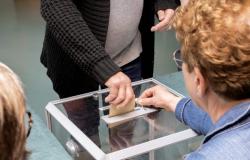A first alarm sounds in triage at the Deux-Ruisseaux hospital (fictitious municipality), in Quebec. This pre-alert informs of a potentially serious event which has just taken place and there are possibly injured individuals. Then a second call rings out: the alert is real and medical staff must prepare. A final call confirms the event: a plane has crashed a few kilometers from the municipality. Code orange is launched.
“A code orange is triggered during an exceptional situation likely to disrupt the normal operation of medical resources, for example during a disaster causing several victims. Hospital teams must reorganize themselves accordingly and, in the event that several injured people arrive at the same time, mobilize quickly to care for patients, in particular by freeing up beds in emergency, intensive care, etc. », Explains Simon Grenier-Michaud, lecturer in the Department of Nursing at the University of Quebec at Trois-Rivières (UQTR). This simulation is part of the critical care course taught by clinical professor Josyane Pinard and allows UQTR nursing students to experience immersion in an emergency situation and prepare for the practice of their profession. .
Moreover, the UQTR Health Pavilion has been transformed into a real crisis environment. Injured people begin arriving at the triage room, most of them by ambulance. Others present themselves to the emergency room, collateral victims not being on the plane but having suffered injuries or experiencing a state of shock. The simulation clearly represents what medical staff must face: prioritization of injured people according to severity, death, people in crisis, individuals looking for a loved one, etc.
Video produced by Thibault Jousselin, communications advisor at the SCRD.
“In the nursing program, we generally learn to perform specific actions, assess a patient, etc. By simulating a code orange, we wanted to take the students out of their comfort zone and put them in an environment where there is intensity, distractions and a need to communicate well for effective patient care and, ultimately, , save lives,” adds Mr. Grenier-Michaud, who was the instigator of this educational exercise in which doctors from the CIUSSS-MCQ also participated.
The team that organized the code orange simulation: at the back, Simon Grenier-Michaud and Jean-Philippe Martel, lecturers in the Department of Nursing at UQTR, Michael Schaulin, medical extern at the University of Montreal (Mauricie campus); at the front, Lauralee Dufresne-Santerre, resident at the CIUSSS-MCQ in family medicine in the University of Montreal program, and Josyane Pinard, clinical professor in the Department of Nursing at UQTR. (Photo: Isabelle Cardinal, UQTR)






